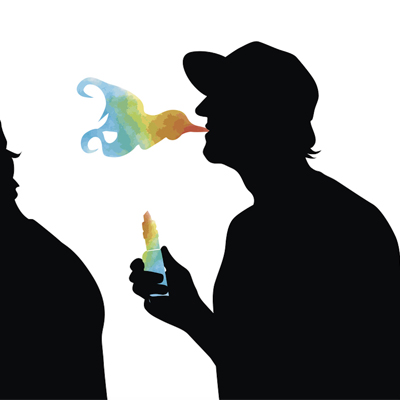"Baby brain" is real and e-cigarettes can help hook adolescents on the conventional death sticks. What else did we glean from the journals?
“Baby brain” is real, and pigmented lesions of the iris can predict cutaneous melanoma risk. Those are just two of the findings gleaned from the medical journal press:

‘Baby brain’ is real
The evidence is in, baby bumps do bring with them bouts of forgetfulness.
A study has shown that “baby brain” is not the myth that some academics have believed it to be.
The meta-analysis of 20 studies, involving more than 1200 women, found cognitive functioning was significantly poorer in pregnant women than in non-pregnant women. Memory and executive functioning were affected from the first trimester with the worst performance in the third trimester.
Many, but not all, women report increased absentmindedness during pregnancy. The changes were generally minor and present as small lapses in memory, such as forgetting to book medical appointments.

Iris lesions and melanoma
Pigmented lesions of the iris should be considered an additional predictive factor for cutaneous melanoma risk, particularly for people of European background aged under 40.
A case-control study of more than 1200 Australians found that the presence of three or more iris naevi nearly doubled the melanoma risk above and beyond conventional risk factors such as red hair and fair skin.
The researchers at the Dermatology Research Institute at the University of Queensland said the findings had implications for the early detection of melanoma in younger people in whom melanoma was more likely linked to the development of naevi than to sun exposure.

E-cigs can hook teens
Any form of tobacco use, including e-cigarettes and similar devices, by non-smoking adolescents is associated with future conventional cigarette smoking, a cohort study has found.
The US study analysed data from a nationally-representative sample of more than 10,000 adolescents aged between 12 to 17.
Any use of e-cigarettes, hookah, non-cigarette combustible tobacco, or smokeless tobacco was found to independently associated with cigarette smoking one year later and use of more than 1 product increased the odds of progressing to cigarette use.
The researchers said the findings suggested novel tobacco products had the potential to undermine public health gains in combatting smoking.

Pollution and asthma
A study has linked exposure to coarse particulate matter with the development and worsening of asthma symptoms in children.
While fine particulate matter (PM 2.5) has long been associated with asthma development, this is the first study to examine the effect of coarse particle pollution (PM 10-2.5). An analysis of Medicaid data from almost eight million American children found that exposure to coarse particulate matter increased asthma diagnosis, prevalence, hospitalisation, and ED visits.
However, exposure to fine particle pollution was still more strongly tied to increased asthma rates than exposure to coarse particulate matter.


